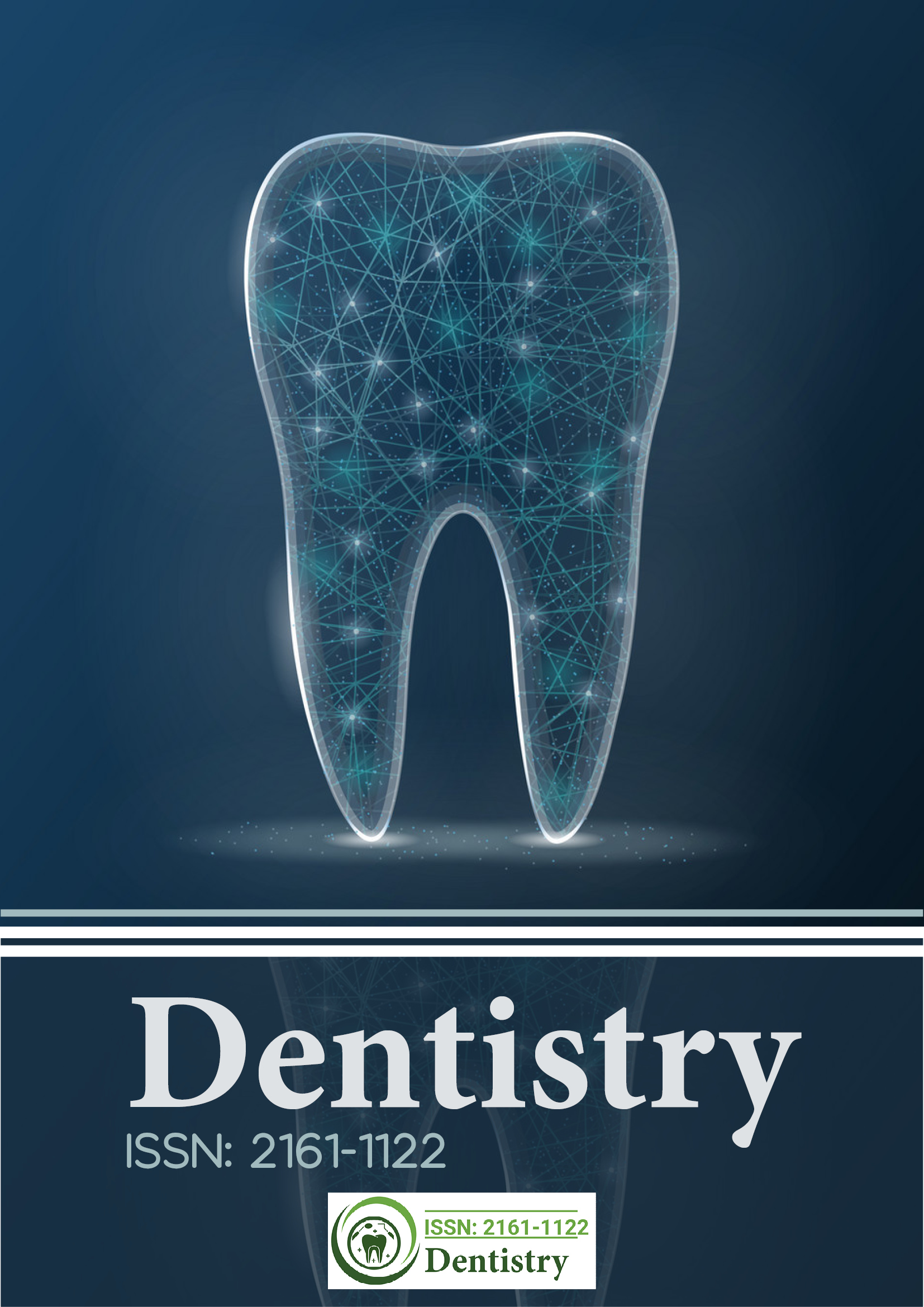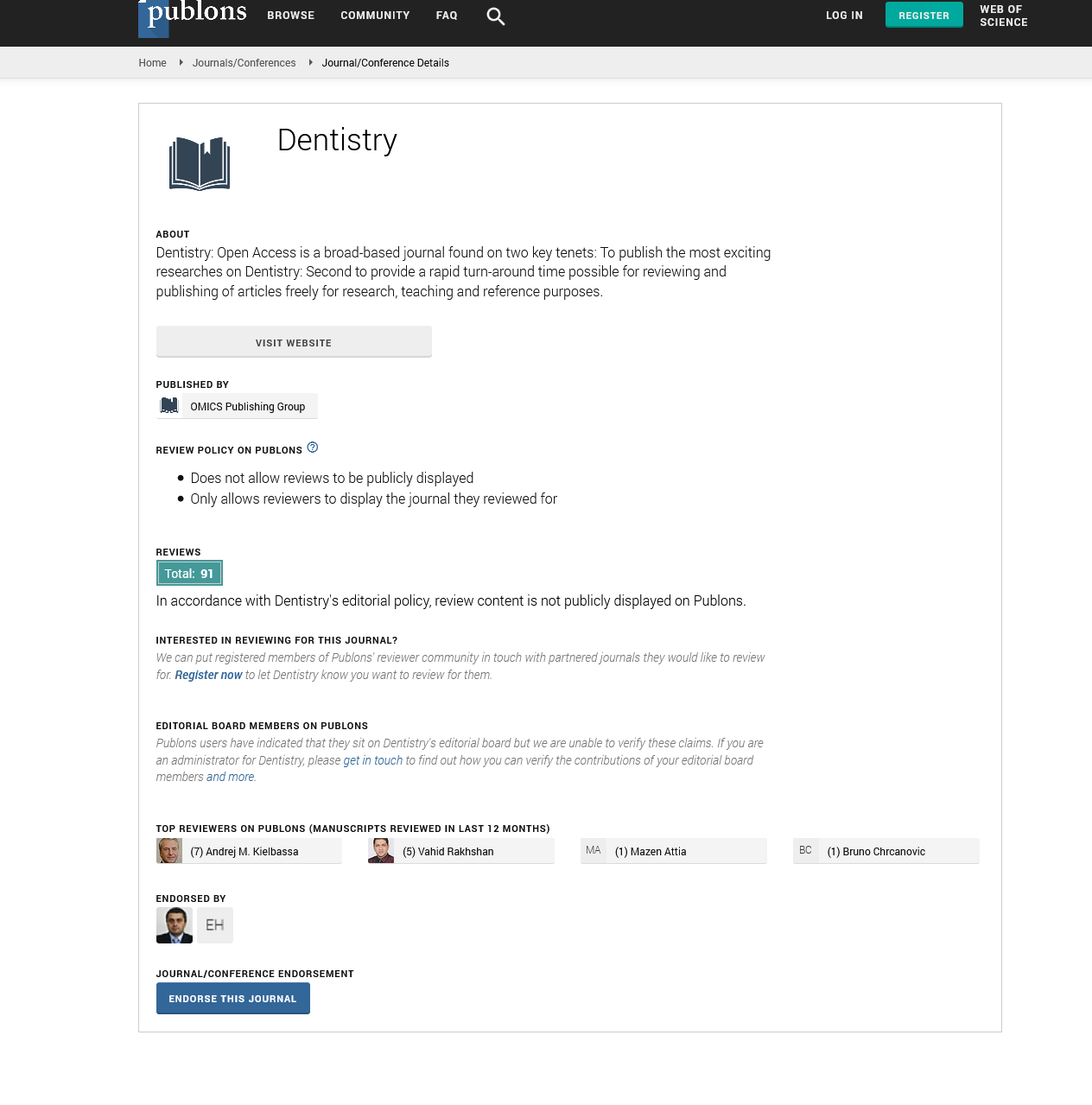Citations : 2345
Dentistry received 2345 citations as per Google Scholar report
Indexed In
- Genamics JournalSeek
- JournalTOCs
- CiteFactor
- Ulrich's Periodicals Directory
- RefSeek
- Hamdard University
- EBSCO A-Z
- Directory of Abstract Indexing for Journals
- OCLC- WorldCat
- Publons
- Geneva Foundation for Medical Education and Research
- Euro Pub
- Google Scholar
Useful Links
Share This Page
Journal Flyer

Open Access Journals
- Agri and Aquaculture
- Biochemistry
- Bioinformatics & Systems Biology
- Business & Management
- Chemistry
- Clinical Sciences
- Engineering
- Food & Nutrition
- General Science
- Genetics & Molecular Biology
- Immunology & Microbiology
- Medical Sciences
- Neuroscience & Psychology
- Nursing & Health Care
- Pharmaceutical Sciences
Dental treatment under sedation versus general anesthesia
Joint Event on 30th International Conference & Exhibition on Dental Medicine & Dental Implants & 5th Annual Summit on American Dental Science and Education
July 20-21, 2018 | Atlanta, USA
Zubaida Al Karaawi
Prince Sultan Medical Military City, Kingdom of Saudi Arabia
Posters & Accepted Abstracts: Dentistry
Abstract:
The prevalence of dental caries among Saudi children is greater than 80%. Dental caries starts at the early age of life (early childhood caries). Many of these children attend dental office only if they have dental pain or a dental abscess that makes treatment on the dental chair is challenging for the dentist. Dental treatment for un-cooperative children can be achieved under sedation together with local anesthesia or under general anesthesia (GA). In Prince Sultan Medical Military City (PSMMC) in Riyadh, both forms of treatment are implemented at the day case surgery for healthy children. Preparation for both procedures is the same as obtaining parent consent, blood screening, and pre-anesthesia patient assessment. The criteria for selecting sedation versus GA depends on type and length of the procedure. A short procedure such as simple fillings or extractions can be performed under moderate sedation with single or multiple sedative drugs while the longer procedure is completed under GA. Both sedation and GA are provided by an anesthesiologist. Dental treatment is performed in a supine position. The preference of two procedures is variable. While parents or guardians favor sedation to avoid GA and its consequences, the anesthesiologists prefer GA as it is easier to monitor patients and in maintaining the safe airway. Moreover, dentists are more comfortable with treatment under GA. Stress is less as sedated patients usually cry, move a lot and there is the possible risk of foreign body inhalation. In conclusion, dental treatment under sedation was successful and did not show any complications but its application must be limited to selected cases. Treatment under GA is favorable for both dentists and anesthesiologists but it is not an alternative to dental treatment on dental chair with behavior management.
Biography :
Dr Zubaida has completed her Master degree in 1999 in Paediatric Dentistry and PhD in Clinical Dentistry from UCL, London in 2004. She had completed six months course and passed the examination in Sedation and Pain Management from the Eastman Dental Institute in 2006. She is a consultant in Paediatric Dentistry and teaching in Saudi Board Program (Paediatric Dentistry) at Prince Sultan Medical Military City in Riyadh. She has published several papers in reputed journals.
E-mail: zkaraawi@hotmail.com

